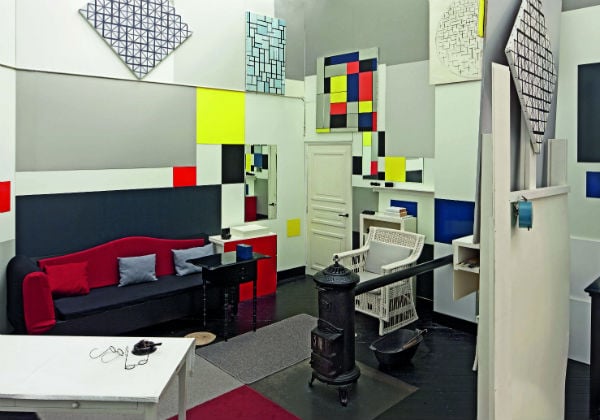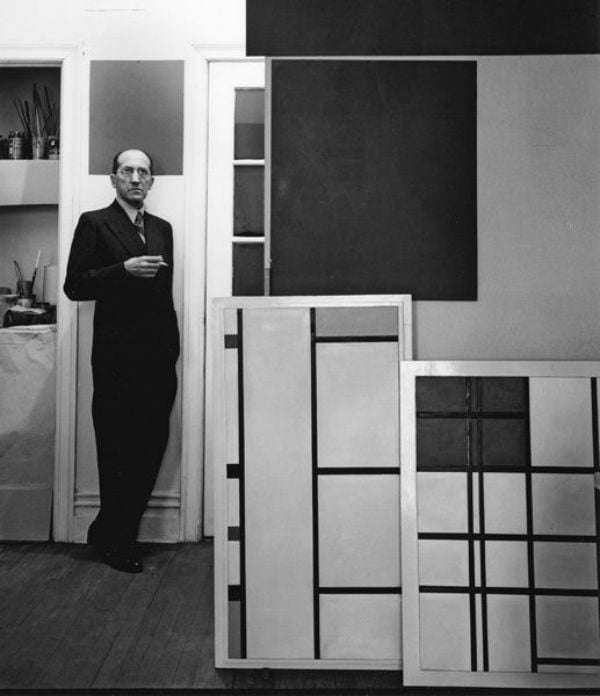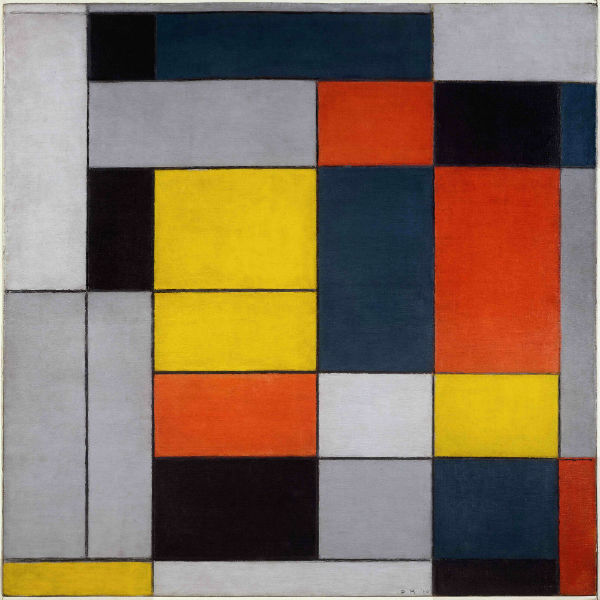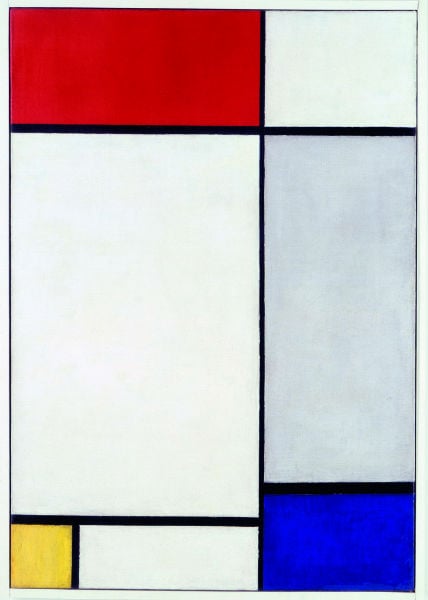Art & Exhibitions
Unlocking the Secret of Mondrian’s Studios
Francesco Manacorda on the Dutch artist’s “inhabitable paintings” at Tate Liverpool

Francesco Manacorda on the Dutch artist’s “inhabitable paintings” at Tate Liverpool

Coline Milliard


Mondrian in his Manhattan studio
Via: Fashionhaus
The studio comes with a mythology: it is seen, somewhat romantically, as place for pure creation, continuing in space the artist’s thinking process. In the case of the studios Piet Mondrian occupied in Amsterdam, Paris, and eventually New York, this is no exaggeration. To mark the 70th anniversary of the Dutch painter’s death, Tate Liverpool is staging an ambitious retrospective, looking at the production of the co-founder of De Stijl through the spaces he worked in. Ahead of the opening on June 6, artnet News asked Tate Liverpool’s artistic director Francesco Manacorda what made Mondrian’s studios so unique.

Reconstruction of 26 Rue du Départ
Photo: Fas Keuzenkamp, © 2014 Mondrian/Holtzman Trust c/o HCR International USA
Why is it particularly important to consider the studio when looking at Mondrian’s practice?
Mondrian’s studio is both a legend amongst avant-garde circles and an incredibly contemporary experimental space where abstraction was re-thought daily. He was convinced that what he achieved on the canvas was ultimately destined to invade the world, and the studio was the place where these three-dimensional experiments were carried out. Every wall was used as a surface where compositions were created and changed constantly through the use of colored and blank cards of different size arranged in the space. The exhibition includes a life-size reconstruction of Mondrian’s most famous studio, in the Montparnasse district of Paris, which he occupied from 1921-1936. It provides a clear sense of the relationship between architectural space and Mondrian’s use of primary colors and straight lines. It also illustrates how the painterly space of Mondrian’s canvasses was in constant dialogue with their direct surroundings.
During the last years of his life, Mondrian experienced successive enforced moves. While he repeatedly set about transforming each new studio, their varied formats are connected to changes Mondrian made to his way of painting, most noticeably in the dynamic rhythms of his later works. By the time of his death, Mondrian’s personality became inseparable from the working environment he created for himself.

Piet Mondrian, No. VI / Composition No.II (1920)
Photo: Tate. © Tate Photography, 2014 / © 2014 Mondrian/Holtzman Trust c/o HCR International USA
How would you define his relationship to the spaces he worked in?
They were immersive environments but also spaces where he would meet people and have conversations. In some way they were inhabitable Mondrians built around his evolving thinking. The other interesting aspect is that, since he was not incredibly successful from a commercial point of view while alive, he always lived and worked in the same space, which is why many people characterized the spaces as monastic cells.
How influenced was he by architecture?
Trees and buildings are motifs that run throughout Mondrian’s long career as an artist. He was always attracted to the combination of structure and nature, either in a framework of branches or a building set in a landscape. When he moved to Paris in 1911, Mondrian settled in an area around the Gare Montparnasse that had undergone rapid development. His drawings show a fascination not just with the facades of buildings but most especially with opened up side views of buildings where a neighboring structure had been demolished. Mondrian saw urban development as part of human evolution towards a more abstract environment. Furthermore, as he commented in his sketchbook, the destruction and reconstitution of the cityscape revealed the nature of existence as a dynamic process; the early works in the show illustrate how this interest developed into a grid-like language that he later used to frame and balance his planes of primary colors.

Piet Mondrian, Composition with Red, Yellow and Blue (1927)
Photo: Museum Folkwang, Essen, © 2014 Mondrian/Holtzman Trust c/o HCR International USA
Have any other artists used the studio space the way he did?
The studio is used as a laboratory quite often but the accounts of people having a total revelation after visiting his studio shows how important that space was in the birth and understanding of abstraction. I would say that if many studios testify to the process of making works, or gather the literal and metaphorical tools used for the creation of artworks. In Mondrian’s case, the studio is an evolution and a continuation of his work. In other words, rather than looking at the past—already occurred processes—his studio was looking into the future—pointing at the possible and most ambitious developments of his art.